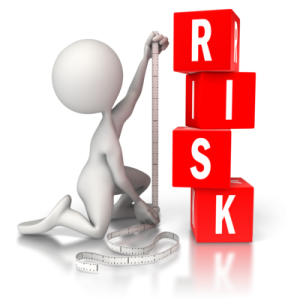The Big Bad Risk Assessment in your Workplace
 To many people the words ‘risk assessment’ are likely to elicit a groan. It’s a task which many people see as either merely one of box-ticking for the powers-that-be, or one which is theoretically almost endless.
To many people the words ‘risk assessment’ are likely to elicit a groan. It’s a task which many people see as either merely one of box-ticking for the powers-that-be, or one which is theoretically almost endless.
The trouble is that with so many people spouting ‘health and safety;’ as an excuse to ban, blame or claim, and with litigation now a fact of almost everyday life in the world of work, it’s easy to be misled into thinking that a workplace risk assessment is either a pointless or endless task.
In fact it needn’t be difficult or time consuming at all, and if done properly it really will make a difference. Not only will employees and the public remain safe, but should the worst happen and an accident of some kind occurs, at least you’ll have the paperwork to back up the fact that you did all you could reasonably be expected to do, keeping your business’s name and reputation in the clear.
Step 1 – Identify The Hazards
The first step in carrying out either new workplace risk assessments or updating an existing assessment is to identify the risks. There are five ways of doing this:
- If you already have an existing risk assessment then read through this carefully and identify any risks which still exist.
- Check through the accident log book and see what accidents have occurred as a result of an identifiable risk.
- Ask the employees, since they are the ones working with the equipment each day. They may well be able to identify possible risks which may otherwise be overlooked.
- Take a walk around the business and consider carefully any possible risks. Don’t forget to consider machinery and tools, air quality and sound.
- Ask an expert risk assessor to walk with you, or carry out a separate risk assessment. Their professional experience is not only likely to identify risks which may otherwise have been overlooked, but they are also likely to be able to carry out this part of the risk assessment much more quickly. At Veritas Consulting we have a specialist team of risk assessors who can help – simply call 0121 702 1425 to discuss your needs without obligation.
Of course, should the worst happen and an accident does occur in the future, if you are able to show that you invited an expert professional in risk assessment to assist beforehand then any possible legal claims are likely to be very easily defended as it can be proved that the risk was so unlikely or extreme that it was virtually unforeseeable, or that there was no reasonable way to minimise it.
Step 2 – Decide Who Might Be Harmed, And How
Once you have identified the risks the next stage is to consider who might be the ones at risk. This could be specific personnel, or even the public. Remember to consider new, possibly untrained staff as well as casual, recruitment staff or those who may be subcontracted or self employed.
Step 3 – Evaluate The Risk
Not all risks are likely, and the actual degree of risk may be very low. It certainly wouldn’t be considered appropriate for example to spend several thousand pounds on providing all staff with special protective gloves to help them avoid the risk of a paper cut!
If the risk is serious enough to warrant action, then the type of action that needs to be taken should be recorded. This might include replacing equipment or tools with safer alternatives, implementing safety barriers or defensive methods, or simply providing training.
Step 4 – Record Your Findings, And Implement Them
Obviously a workplace risk assessment is of no value whatsoever if the recommendations within it aren’t acted upon. If certain risks can’t be eliminated or reduced immediately because the ideal preventative measure is too expensive then at least implement a stage-by-stage approach, whereby an affordable solution can be implemented immediately, with a clear plan in place to upgrade the protection as time and finances allow.
Step 5 – Review And Update On A Regular Basis
Although there is no set frequency for updating or reviewing a risk assessment there are three triggers which we would recommend:
- If ever any new equipment or tools are purchased or introduced, the risk assessment should be reviewed
- If any changes to the workplace are implemented, from new lighting to new premises
- If no review has taken place for 12 months.
If you have any questions or concerns regarding your business’s workplace risk assessment, call one of our experienced risk assessment professionals on 0121 702 1425 and they will be happy to help you.

A chartered (fellow) safety and risk management practitioner with 20+ years of experience. David provides a healthy dose of how-to articles, advice and guidance to make compliance easier for construction professionals, Architects and the built environment. Get social with David on Twitter and Linkedin.



